My Shopping Bag
Your shopping bag is currently empty.
Recently Viewed
Would you like to pair it with your medal?
Free delivery
- Total (Excluding VAT)
- 0
Turquoise
Characterized by an intense blue color, turquoise is among the first stones to be mined during Antiquity. Collections such as Alhambra®, Perlée® and Bouton d’or® feature turquoise in delicate harmonies of color, set off by white or yellow gold. Turquoise’s azure hue also features in the Maison’s High Jewelry creations, where it figures beautifully side by side with precious stones.
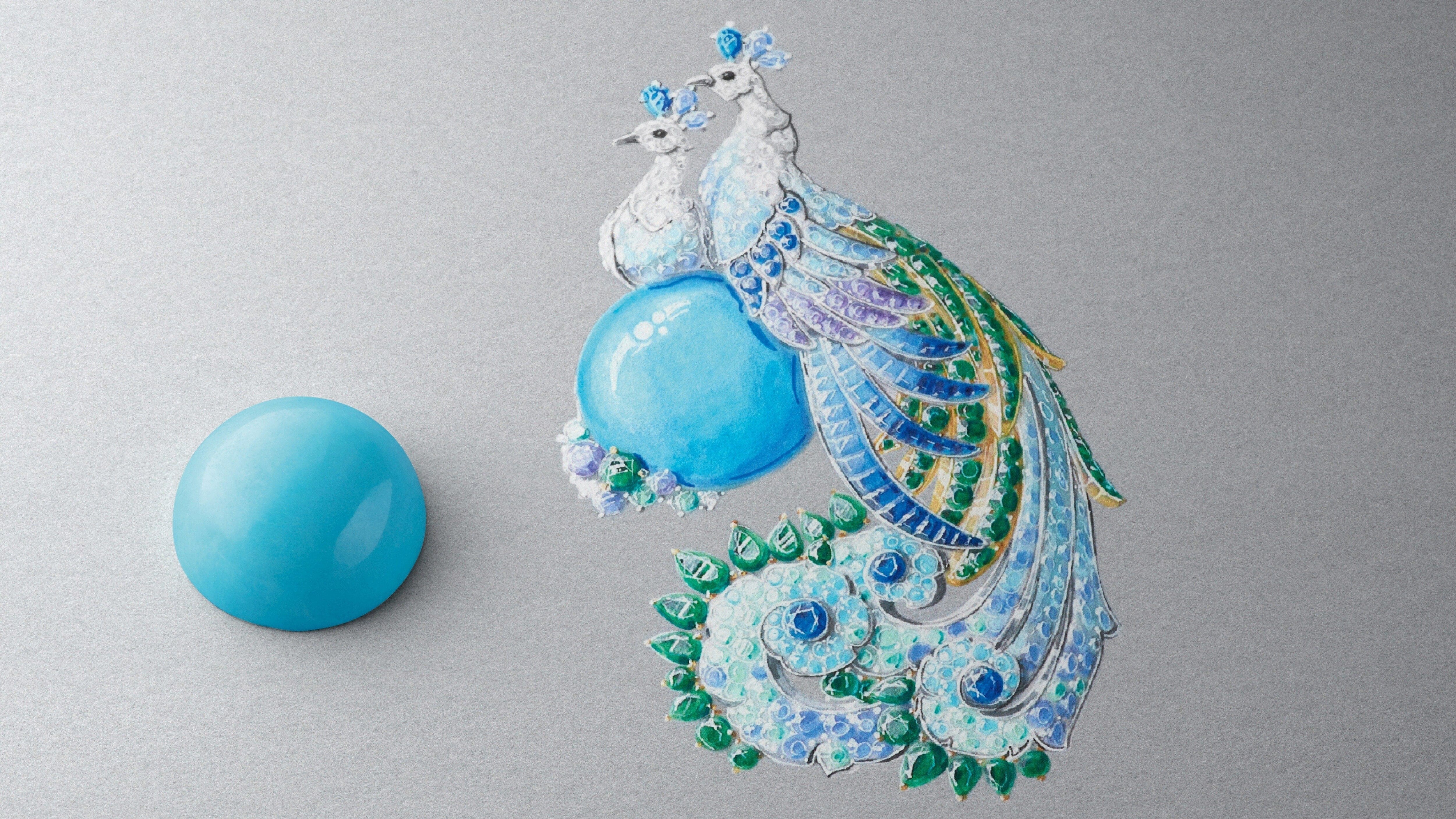
Cabochon-cut turquoise shown on the gouaché design of the Paons clip
A symbol of prosperity, it was prized by Egyptian pharaohs and Aztecs alike.
Turquoise was introduced in Europe during the Renaissance: imported from Turkey, it came to be known as “Turkish stone.” A symbol of prosperity, it was prized by Egyptian pharaohs and Aztecs alike, who used it to embellish jewelry, religious artifacts and great seals. In Europe, turquoise is offered as a sign of devotion due to its color reminiscent of the forget-me-not, a flower representing love and remembrance.
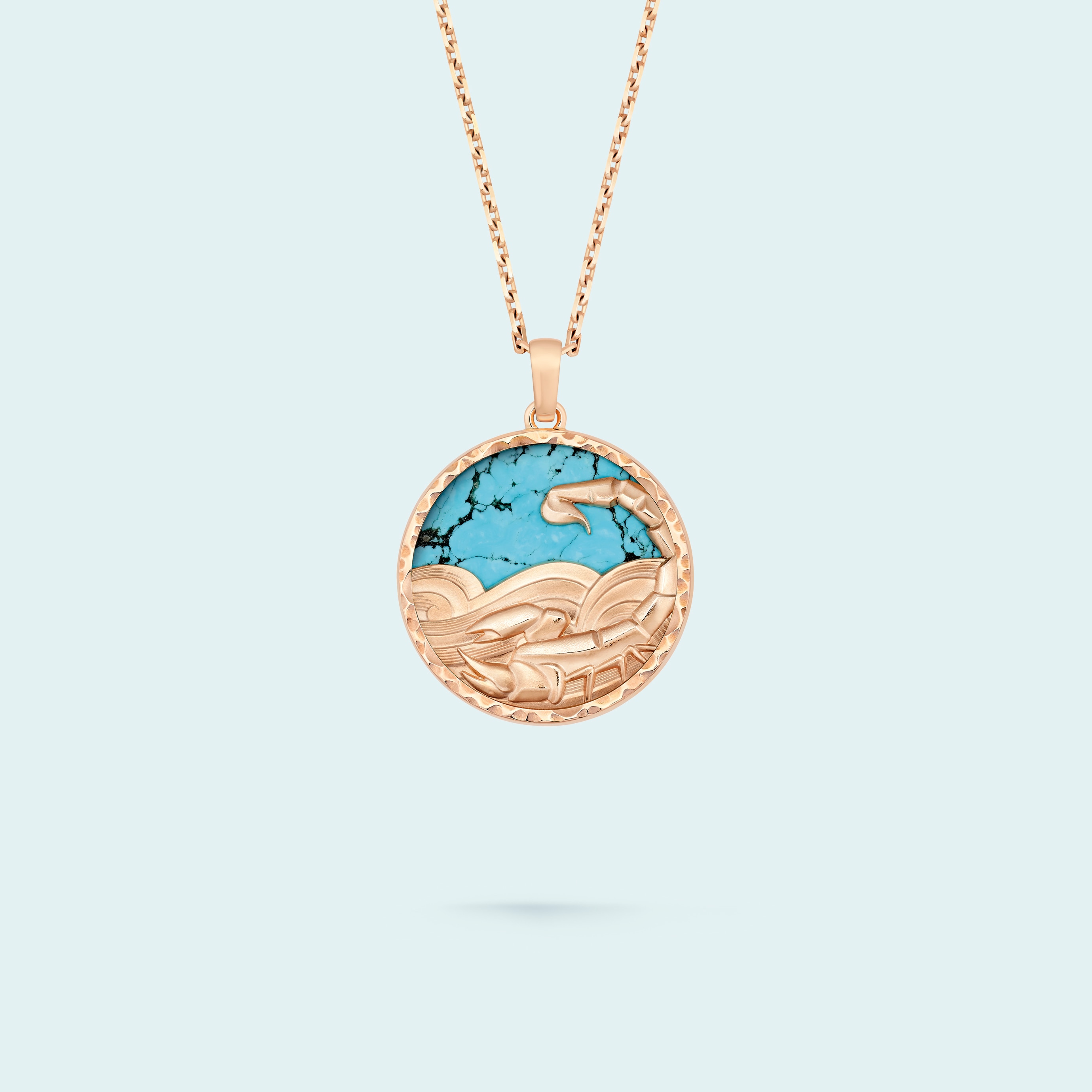
Zodiaque long necklace Scorpii (Scorpio), 18K rose gold, turquoise
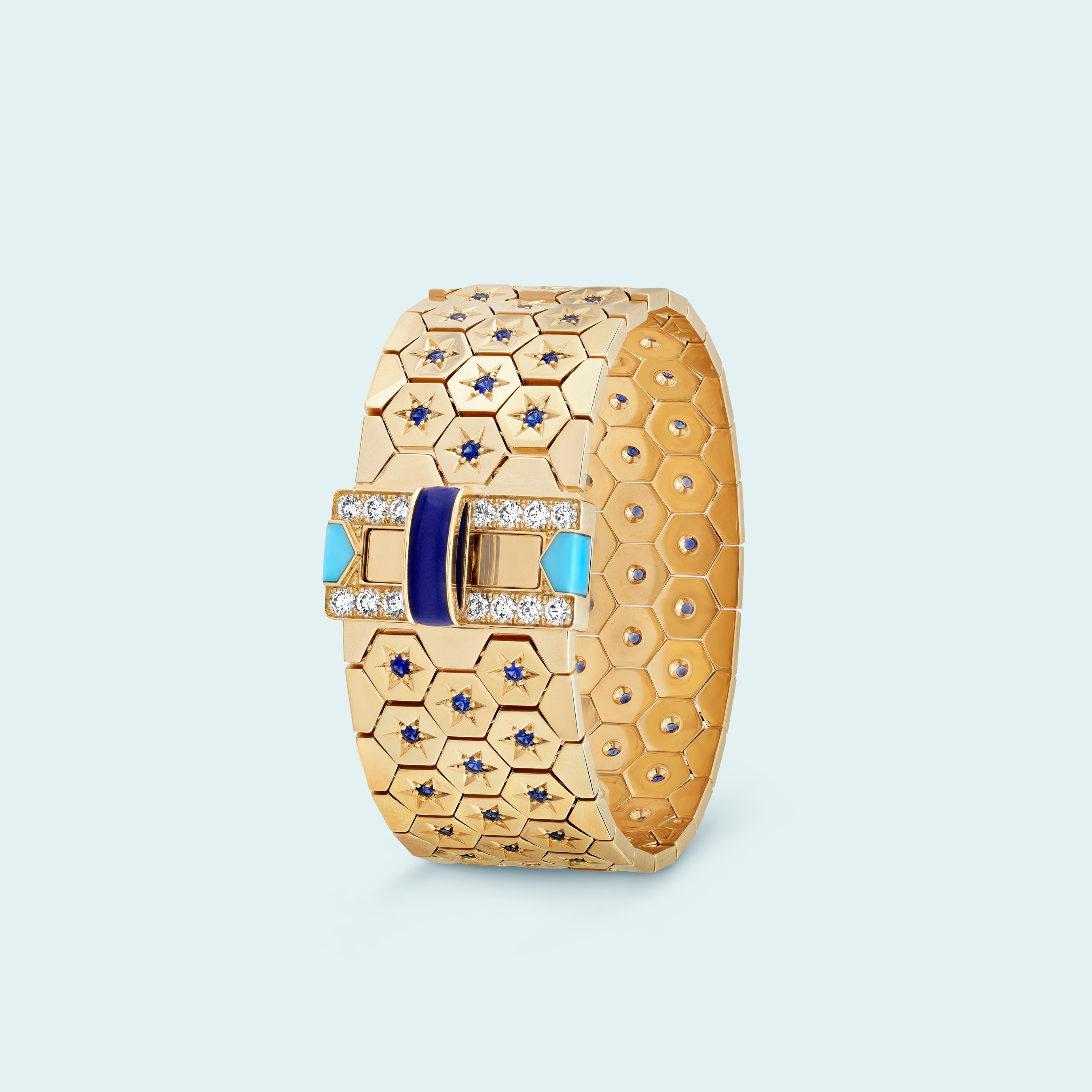
Ludo bracelet, 18K yellow gold, sapphires, lapis lazuli, turquoise, diamonds
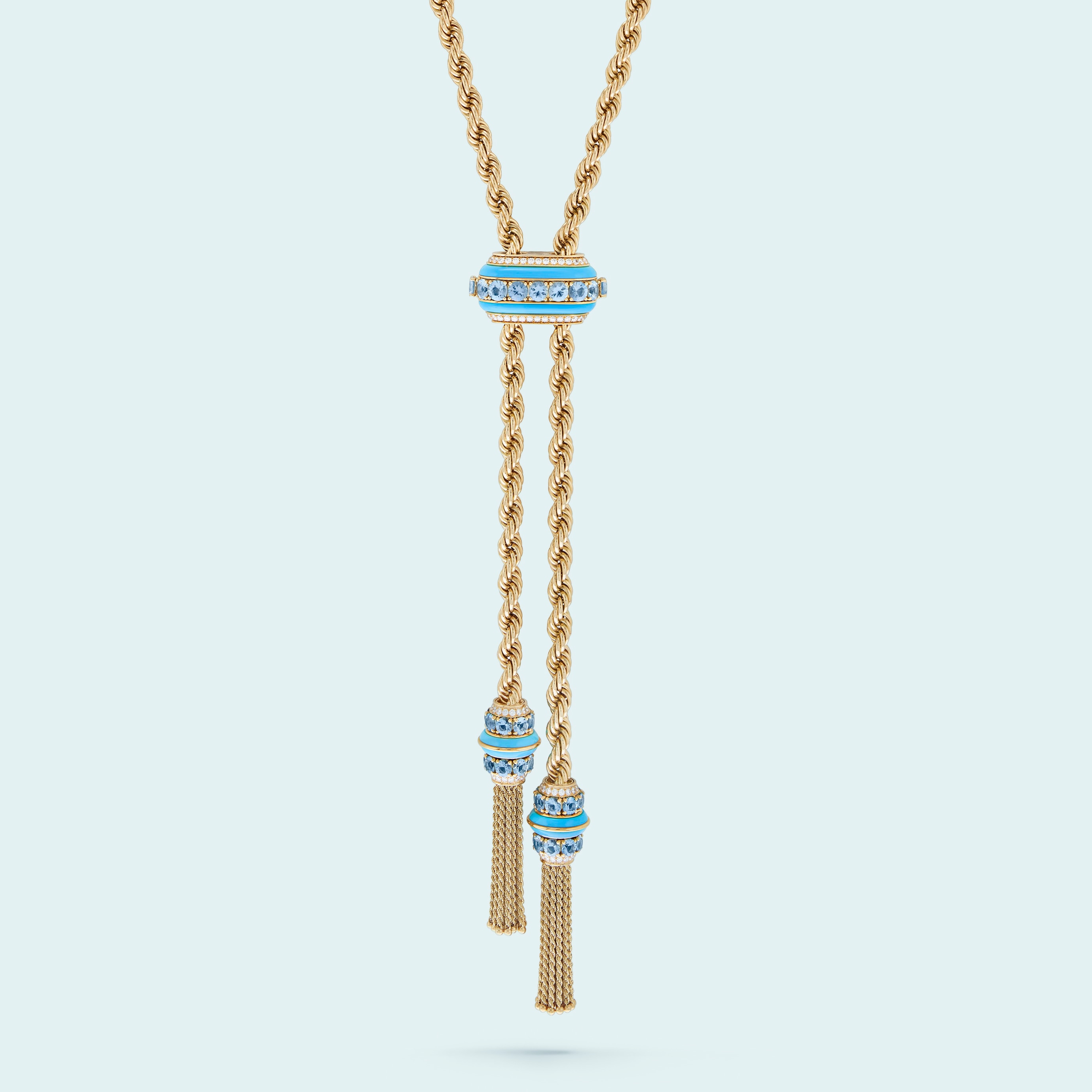
Liane™ long necklace, 18K yellow gold, aquamarines, turquoise, diamonds
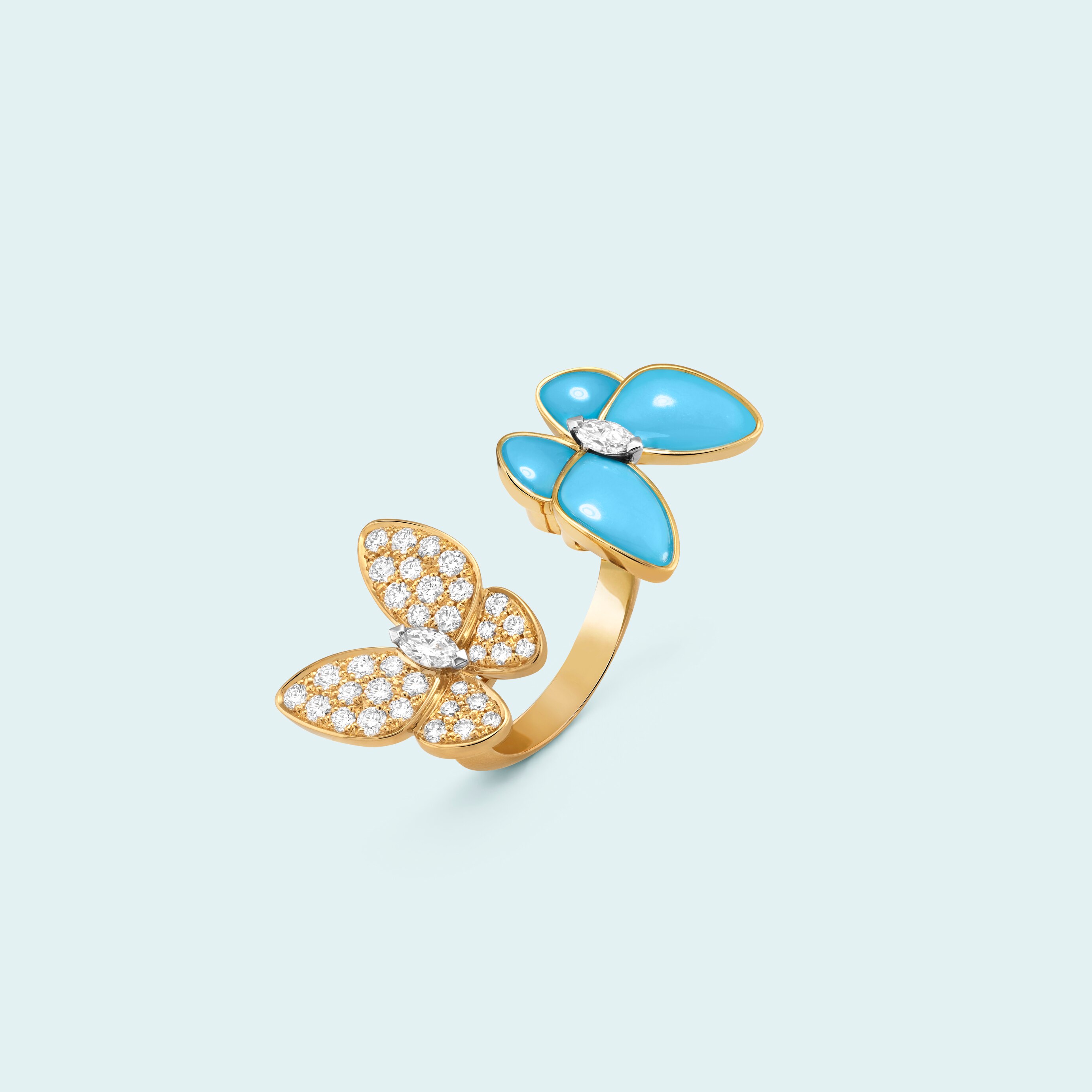
Two Butterfly Between the Finger ring, 18K yellow gold, 18K white gold, turquoise, diamonds
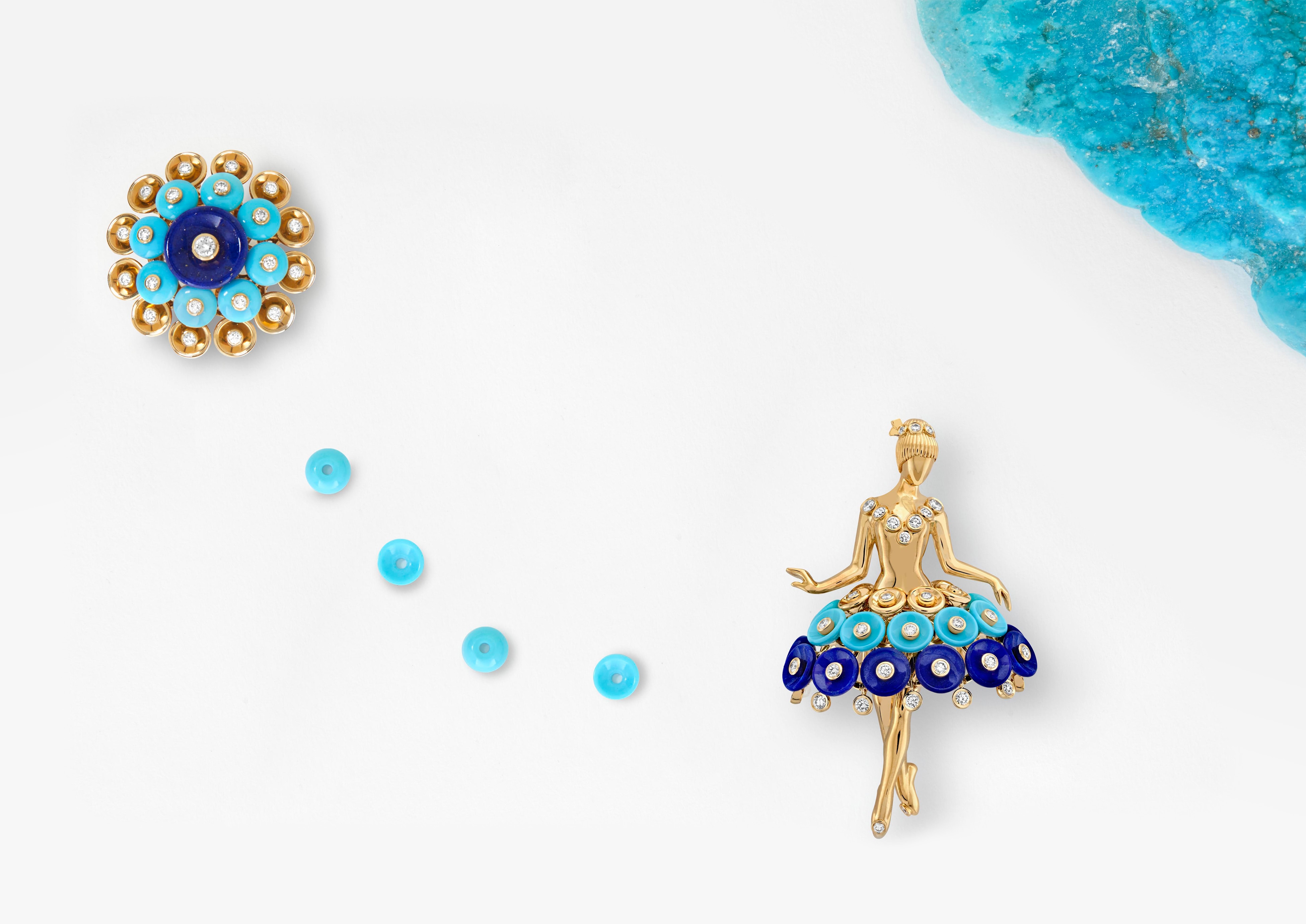
Bouton d'or ring and ballerina clip, 18K yellow gold, lapis lazuli, turquoise, round diamonds
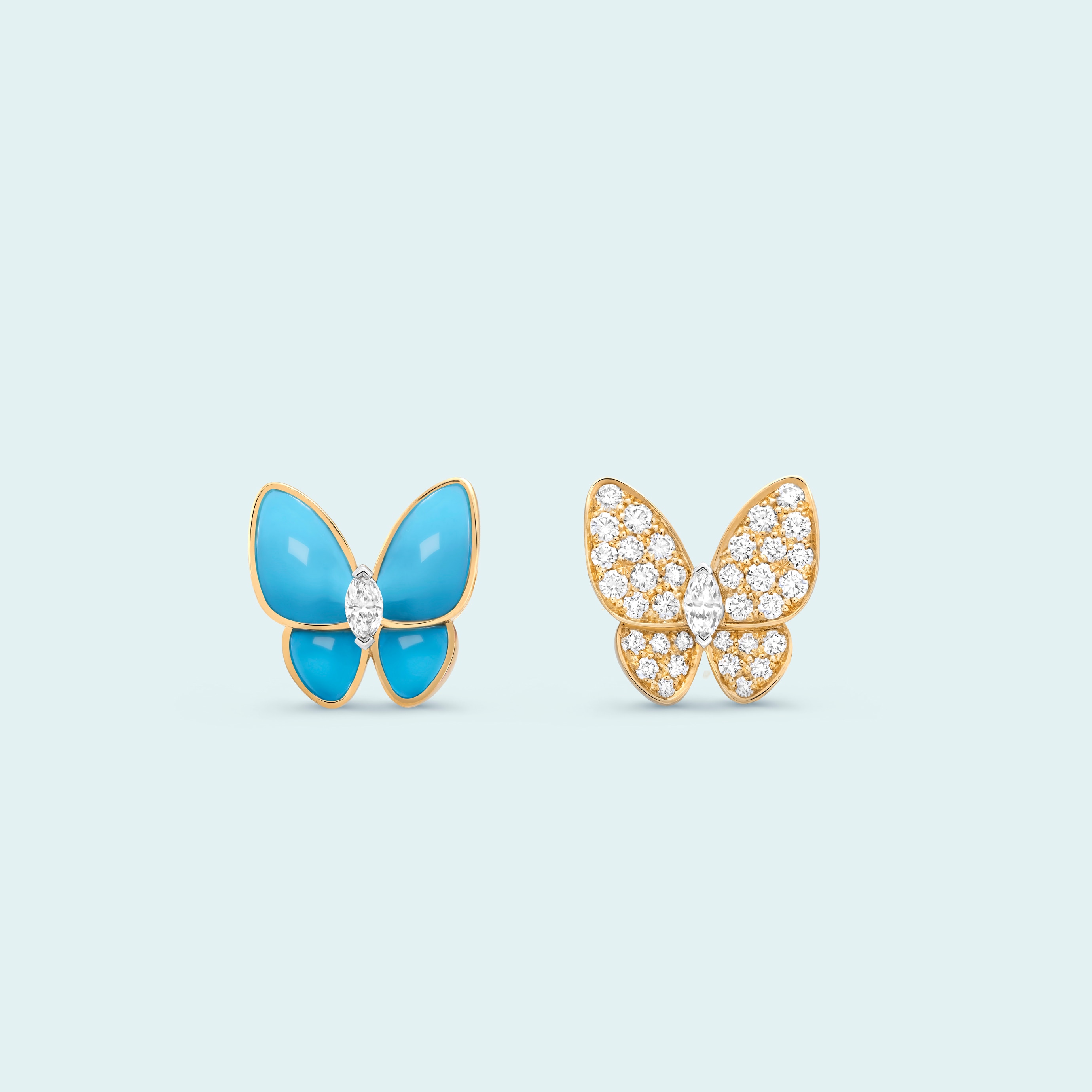
Two Butterfly earrings, 18K yellow gold, 18K white gold, turquoise, diamonds
For its creations, Van Cleef & Arpels selects turquoise from Central and South America for its perfectly consistent sky-blue tone. Owing to its nature and chemical composition, the color of turquoise stones may change over time or when exposed to acidity and heat.
To preclude such alterations, Van Cleef & Arpels purchases stones having undergone a stabilization process in their raw state to preserve their natural hue.
It is natural for the shade of turquoise to change slightly over the years. To protect the unique beauty of your piece, the Maison would like to share the following care recommendations.
Turquoise is particularly sensitive to the sun and direct light, which can dehydrate it and turn it green. The Maison therefore recommends that its turquoise creations be stored in a closed case.
This mineral forms in dry, arid environments and can absorb liquids and chemical products (water, soap, creams) which may alter its color. It is preferable to avoid any direct contact with perfumes, lotions, and hand sanitizer.
The stone is also sensitive to perspiration because of its acidity, so we recommend removing your jewelry before engaging in any sporting activity.
You may clean turquoise with soap water and a soft brush. Please make sure you dry it well with a soft, dry cloth.
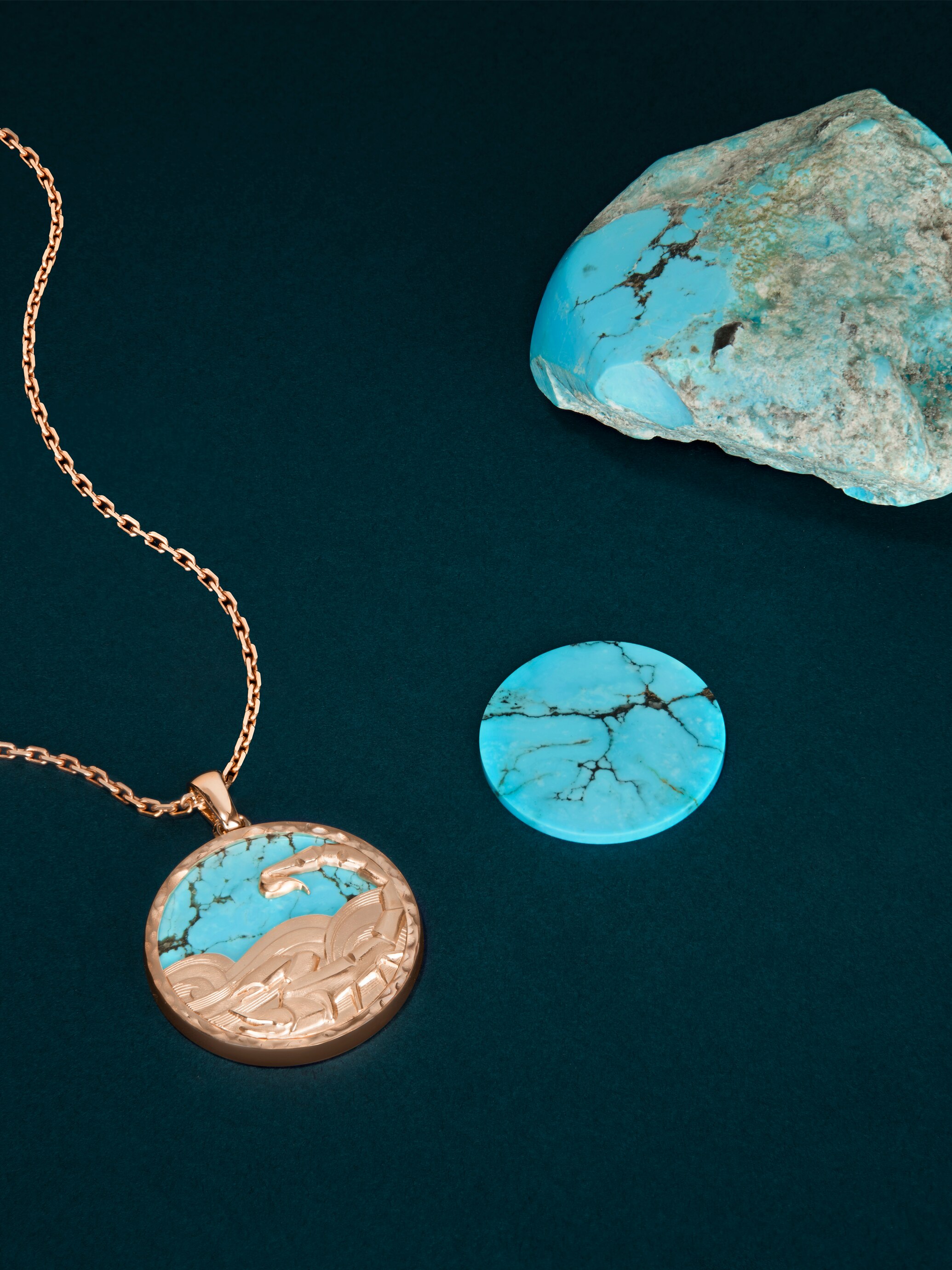
Zodiaque long necklace Scorpii (Scorpio), 18K rose gold, turquoise
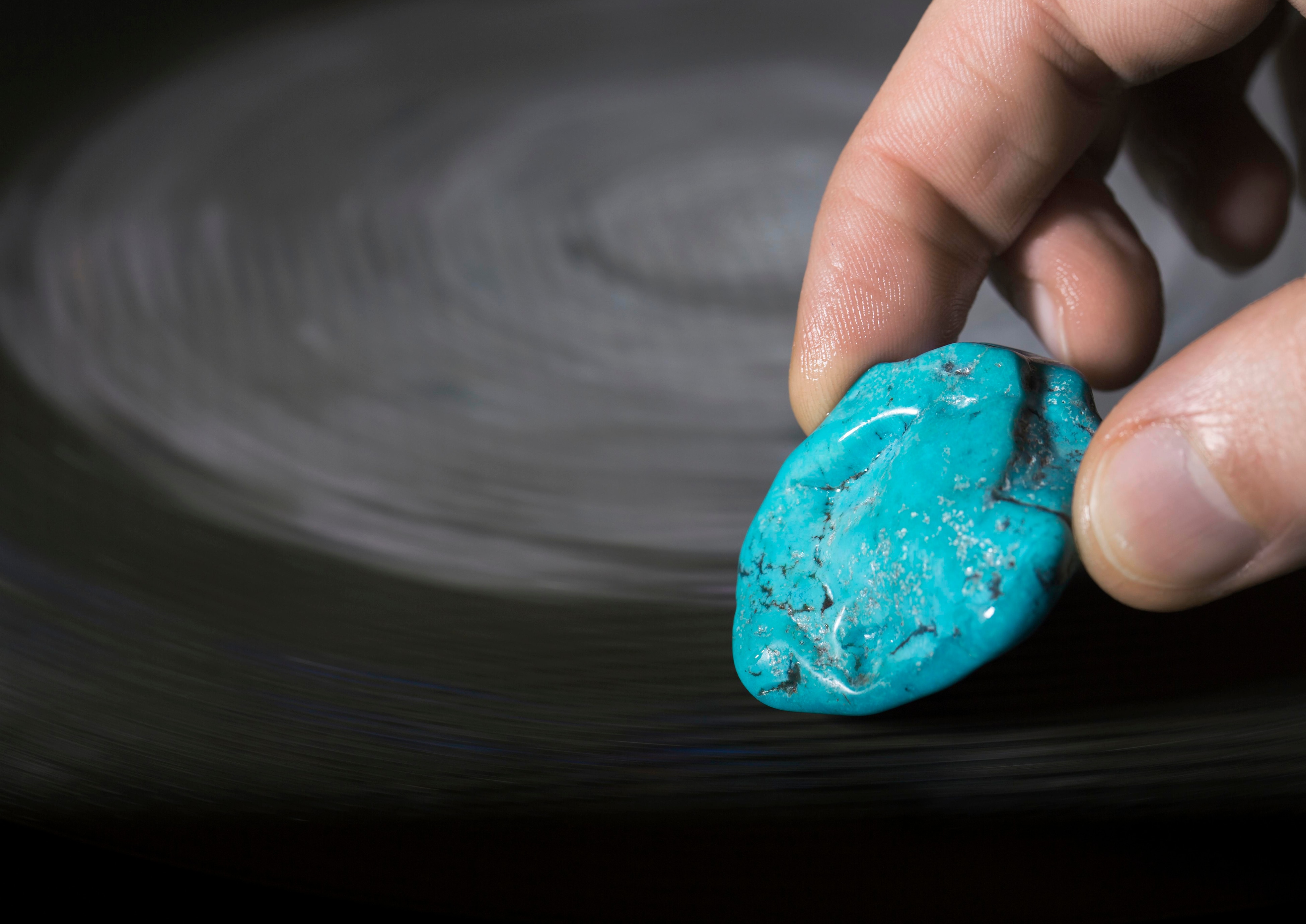
Sculpting the rough turquoise stone
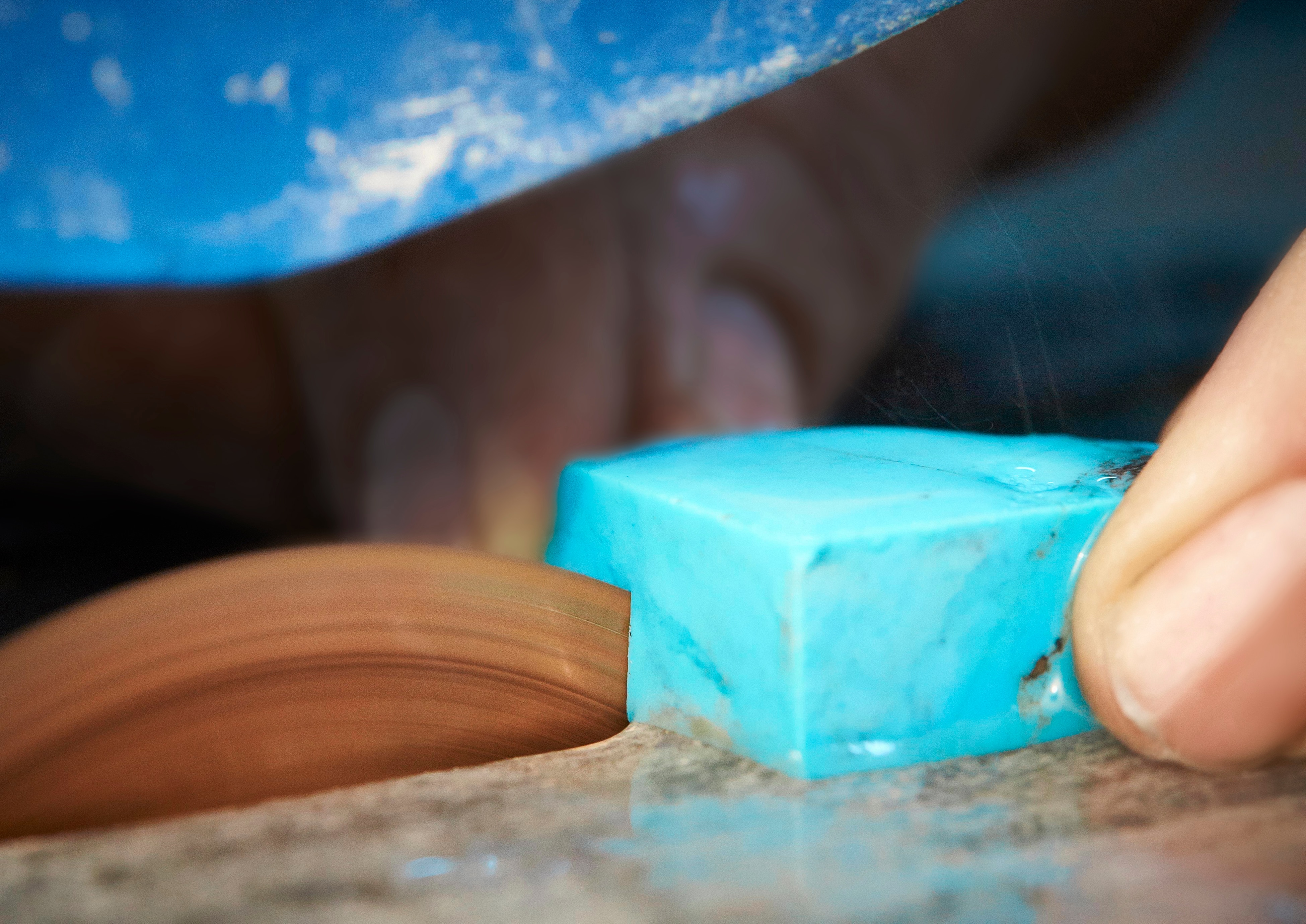
Cutting the rough turquoise stone
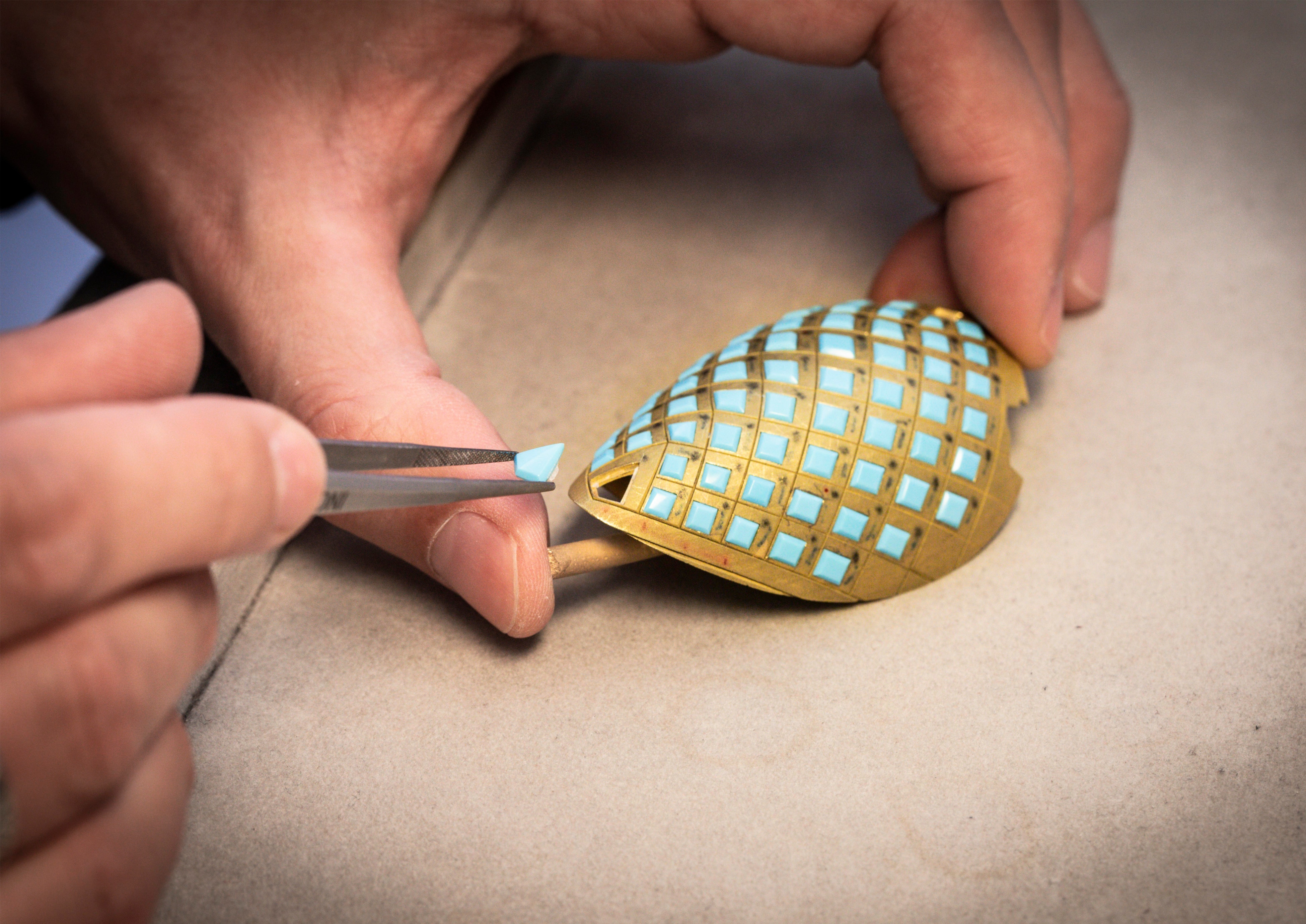
Setting turquoise on the male bird’s back for the Fontaine aux oiseaux automaton
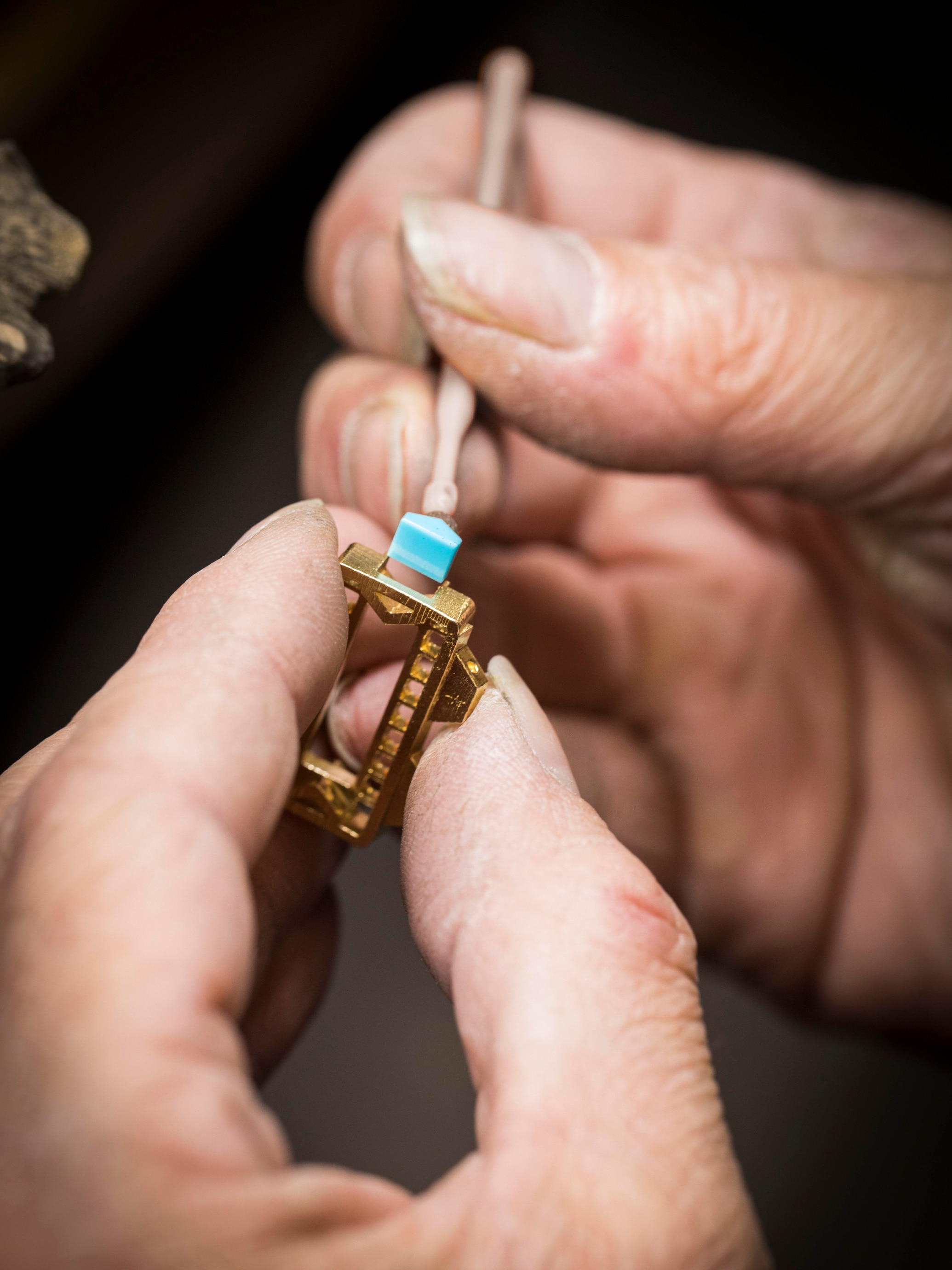
Setting work, positioning the stone on Ludo bracelet
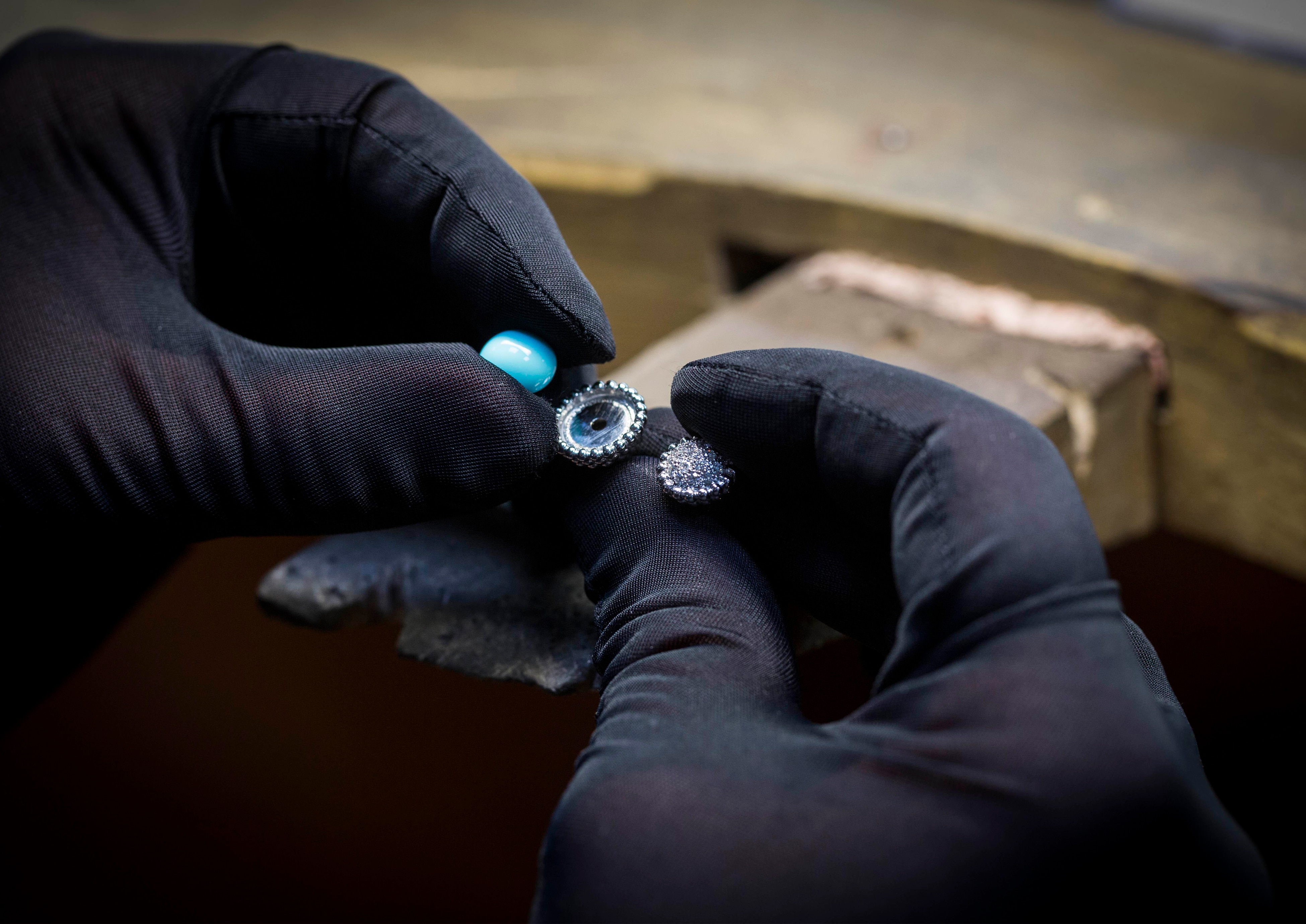
Assembly of the stone and the body of the Perlée® ring